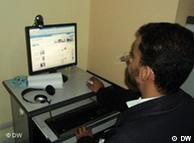In a relationship with pornography that spanned three decades, Michael Leahy said it was in the final five years that his use of the material went beyond recreational — it became an obsession.
At the height of his addiction, Leahy worked out of a cubicle for a computer company in Atlanta, and accessed porn online for an hour or two a day. As a company salesman who was often on the road, Leahy said that tally could reach as many as eight hours in a day.
“Of all the places where I acted out sexually in inappropriate ways, I did it more often at work than any place else,” said Leahy, 52, a recovering sex addict, founder and executive director of
BraveHearts and author of “Porn Nation” and “Porn@Work.”
“Work was a safe place for me in essence because my wife at the time, she was at home with our children, and home wasn't a safe place, and what other choices do you have at that time?”
The Center for Internet Addiction Recovery says estimates suggest one in five Internet addicts are engaged in some form of online sexual activity, primarily viewing porn and/or engaging in cybersex. Statistics have also shown 70 per cent of all Internet porn traffic takes place during the 9-to-5 workday.
A 52-year-old employee with Ontario's Ministry of Community Safety and Correctional Services was arrested and charged last week after child pornography images were found on his work computer.
If you're serious about keeping your job, you've got your breaks, your lunch, you've got your own BlackBerry. Get an iPhone and do what you want to do on your time. Fiorella Callocchia, a certified management consultant
And south of the border, an investigation of employees with the U.S. Securities and Exchange Commission found senior agency staffers were spending hours surfing pornographic websites.
In one case, a senior attorney spent up to eight hours daily looking at and downloading porn, burning files to CDs or DVDs when he ran out of hard drive space. In another, an accountant was blocked more than 16,000 times in a month from visiting websites classified as “sex” or “pornography.”
In an era where many employers are cracking down on personal use of office computers for non-work related activity, why would employees run the risk of trying to access explicit material using company resources — and on-the-job time?
“I think that people perhaps think they can get away with it,” said Penny Lawson, manager of the Sexual Addiction Treatment Program at
Bellwood Health Services in Toronto, which specializes in treatment of addiction and mental health problems.
“Not everybody who accesses porn at work has a sexual addiction. But certainly someone with a sexual addiction, the risk of getting caught increases the excitement around it.”
While there are many types of behaviour a sex addict will engage in, a very large proportion of them use Internet porn and masturbation as a form of excitement, Lawson said.
“It's a big part of it for the people we see,” she said. “Availability is one of the criteria that makes a fertile ground for addiction to develop.”
Lawson said she has also heard from addicts that even if there are filters and blocks to sexually explicit material, those who are very tech-savvy can get around them to access porn.
Marco Bonanni of Optrics Engineering, a diamond partner of Barracuda Networks, which specializes in e-mail and web security, said workers should be aware everything they're doing is marked and logged — even things they might think are innocent.
“The equipment that most organizations install nowadays have months and months of logged data and information about every single message that goes in and out of the company, or every single URL or website that's been visited,” he said from Edmonton.
What's more, some filters are set or configured to display a message notifying users that a particular website they're trying to visit has been blocked.
“Even though it is blocked, it still logs the fact that they attempted to go to it,” he said.
In most cases, Bonanni said companies are trying to protect themselves against virus infection, but in some instances they're looking for something specifically to prevent abuse.
Amid the vast amount of sexually explicit content available online, one of the world's most famous men's magazines seems to be aiming its target in a slightly different direction with what's being billed as a “safe-for-work website.”
In a brief statement sent to The Canadian Press, Playboy virtually echoed the teaser posted on
The Smoking Jacket, saying that the site “brings you everything you love about men's entertainment and the Internet, minus the stuff that'll get you into hot water at the office!” Playboy says the site is scheduled to launch in the coming months.
Fiorella Callocchia, a certified management consultant and president of
HR Impact in Mississauga, Ont., said most of her clients have a very strict policy on what can and can't be done on office computers.
“If they want to check their Hotmail, or they want to check their Gmail... or they want to quickly go on eBay or something, there's a little bit of give and take. But in terms of any sites that are questionable, it's an absolute no-no in most companies,” she said.
Callocchia said companies need to be clear about the appropriate use of technology. Workers should find out about policies with respect to use of the Internet and err on the side of caution, she said.
“Don't give the company a reason to fire you. Don't give them a reason not to trust you,” Callocchia said. “If you're serious about keeping your job, you've got your breaks, your lunch, you've got your own BlackBerry. Get an iPhone and do what you want to do on your time.”
Ultimately, Callocchia said companies have the right to monitor the system and do so without their employees' knowledge, as it is their brand and reputation that's at stake.
“When you hurt a company's brand, you're hurting your own employability. You're hurting your own potential security,” she said. “Whether you steal from a company whether it's time or whether it's supplies or whether it's somebody's lunch in the fridge, you're hurting the organization. And it's not just the nameless, faceless few. Other people's jobs are at risk too. And I think we've got to start holding managers accountable for communicating this kind of stuff to people.”
Leahy said responsibility lies with both sides: workers need to be active in seeking help, and companies should be proactive by adding assistance for sex addiction and recovery among things listed as employee benefits.
“We need to be able to go to those employees and say, `Listen, you need help with this. If you do, we'll hold your position, help you get the help you need. But right now, the prevailing winds say `One strike and you're out,“’ he said.
“Organizations are scared to death of sexual harassment lawsuits and hostile workplace environment lawsuits that this kind of unacceptable sexual behaviour in the office can create.”
Firing a worker using online porn who may be grappling with a sexual addiction won't solve the problem but simply result in them popping up somewhere else in the labour supply chain, Leahy said.
“They're going to work for a competitor or a customer or a supplier. They're not going away,” he said.
“And what's really the issue here is we as a society have really created this thing — this compulsive, addictive behaviour because we're creating media and messages that are more sexualized and more compelling. We're trying to draw eyeballs to our computer screens or the TV programs or what have you, and a good ad or a good promotional piece has a lot of alluring sexual content in it.”
“There's a percentage of this population that has not been able to learn how to handle that, and that's where the problems are coming up.”




